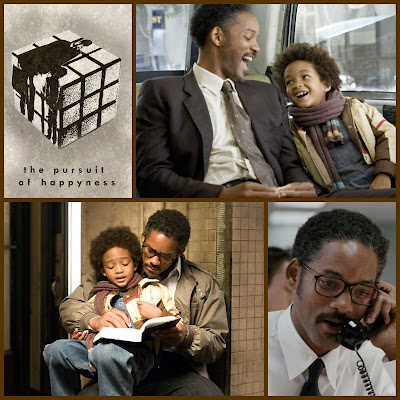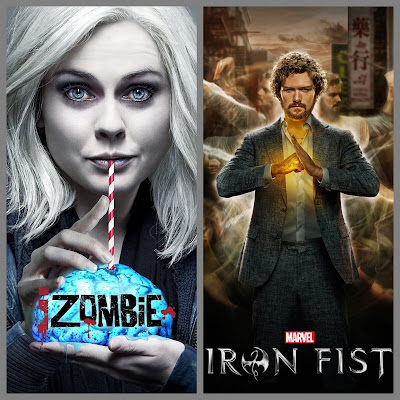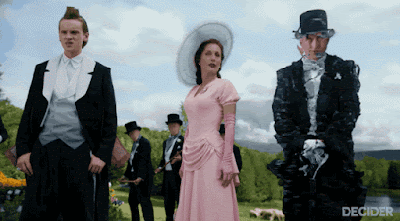HERE IS MY TOP 10 HORROR MOVIES BEFORE THE 20TH CENTURY!
10. Scream (1996)
Both director Wes Craven and writer Kevin Williamson have plenty of successes in their career, but Scream remains a big highlight for both men. Williamson's script managed to deftly be so many things -- it was a sly meta/self-parody about the horror genre that didn't cross the line into goofiness, while also playing as a successful whodunit and, most importantly, an effective horror film in and of itself.
Finally a group of horror movie characters made it clear that yes, they'd seen all the same movies we had, and were aware of the rules and clichés that come with the genre. But no one was more knowledgeable than the killer (or is that killers?), who toyed with the victims by asking them horror movie trivia that plenty of us in the audience could have fun playing along with.
But when the killer actually showed himself, it was terrifying, with several extremely well-executed suspense scenes by Craven, which proved again just how good he was with this sort of material. A movie that set out to simultaneously make the audience laugh, cheer and yes, scream, Scream deserves a lot of credit for pulling off all these elements so well.
Scene to watch with the lights on: Scream's opening scene is incredibly strong and scary, instantly grabbing the audience by the throat. Watching a high school girl (Drew Barrymore) get a series of increasingly ominous phone calls, we (and she) begin to realize just how vulnerable she is. And that's when the guy with the ghost-faced mask shows up...
9. The Blair Witch Project (1999)
The movie that gave birth to the whole "horror movie as faux-documentary" and that inspired such films as Paranormal Activity, The Blair Witch Project is quite an effective scare fest in retrospect.
Some of its then-inspired choices in the realm of "is it or isn't real" seem dated and obvious now, given the fact that the Internet seemingly sets out to reveal spoilers that surround projects like this. (Also, we know it's all fiction at this point.) But Blair Witch came out in 1999, when the Internet was in its infancy and could be used as a tool to successfully convince audiences that maybe the story of a three-person documentary crew going Snipe hunting for what turns out to be pure evil is in fact real.
Blame the gift/curse of the shaky cam on this movie, but give it credit for delivering scares in such a way that changed the way we like to be scared... and that changed the way Hollywood goes about making the things that scare us. In fact, a new take on Blair Witch is coming out in the fall of 2016.
Scene to watch with the lights on: A night in the woods full of tent shaking and lots of screaming leads to a morning where one character discovers a nice gift-wrap of anatomy no longer attached to its person.
8. The Fly (1986)
David Cronenberg's very R-rated, very intense and very excellent remake of The Fly puts Jeff Goldblum in the role of Seth Brundle, a scientist who invents telepods meant to change the world. Instead, they change him into a man-fly monster when a fly accidentally gets trapped in one of the machines as Seth teleports from one pod to the other.
The script, performances and Howard Shore's tremendous score work together to create a horror opera, one full of dark twists and practical creature effects scares. Once all the gore and vomiting-on-food-to-eat-it settles, we realize we've just watched a tragedy about a scientist who accounted for everything save nature finding a way to remind man not to play God. (Kind of fitting that Goldblum learned this lesson here and again in Jurassic Park, no?)
Scene to watch with the lights on: Brundlefly inspecting a medicine cabinet-turned-museum of pieces of the man-fly that his new insect body doesn't need anymore. (Give yourself a gold star if you can spot his mason-jarred junk or if you don't wince at the moment before this scene, where Seth peels off his fingernails.)
7. Dawn of the Living Dead (1978)
Romero practically created the zombie movie genre single-handedly in 1968 with Night of the Living Dead. Ten years later he refined the formula with Dawn of the Dead. Far bigger, gorier, and funnier than its predecessor, Dawn of the Dead remains Romero's definitive work.
Whereas Night featured a small cast of survivors holed up in a remote farm house, Dawn opens with a glimpse of a major metropolitan area falling to chaos during the zombie outbreak. It isn't long before our four heroes are forced to leave town and barricade themselves inside a shopping mall. But as it turns out, the undead hordes still retain enough of their old selves to feel the need to shop and consume.
The true brilliance of Dawn is how it combined straight-up zombie carnage with a healthy dose of satire and social commentary. At the end of the day, are modern Americans really so different from the shambling undead? They crave warm flesh; we crave iPhones. It's a message that was somewhat lost in the enjoyable but inferior 2004 remake.
Scene to watch with the lights on: The opening battle scenes in Dawn of the Dead provide a telling picture of just how far society has crumbled since the zombie outbreak. SWAT teams storm an apartment building in urban Philadelphia, battling confused, angry residents and eventually hungry zombies. A SWAT member even commits suicide after being forced to gun down an attacking zombie.
6. The Shining (1980)
The Shining might just be Stephen King's most popular horror novel. Stanley Kubrick's movie adaptation is almost certainly the most popular Stephen King film. The project was an unusually commercially-focused one for Kubrick, but the same stylistic elements that defined his earlier films were on full display, and the film remains a haunting and unsettling chronicle of a family man's psychological breakdown.
Jack Nicholson plays Jack Torrance in this adaptation. Torrance is a struggling writer who accepts a job as winter caretaker for the Overlook Hotel in the Colorado Mountains. The knowledge that the previous caretaker had gone insane and murdered his family fails to scare Jack away. But when both Jack and his psychically attuned son begin communing with the many spirits haunting the Overlook, things quickly take a turn for the worse. Deadly hedge mazes, elevators full of blood and the terrifying Room 237 are only some of the horrors that await viewers.
Aside from being a genuinely scary film, The Shining has left its mark on modern pop culture. Who doesn't recognize the image of Nicholson poking his head through a doorway and shouting "Here's Johnny!"? The Shining also served as fodder for one of the best "Treehouse of Horror" segments in the history of The Simpsons. The film is required viewing for any horror aficionado -- just don't expect to sleep easily that night.
Scene to watch with the lights on: "The blood usually gets off on the third floor." May we also suggest the Room 237 scene. Beware of hot chicks in bathtubs that are really Overlook corpses!
5. Texas Chainsaw Massacre (1974)
Do you like your films bleak, bloody and full of brutality? Tobe Hooper's gruesome indie 1974 flick took the nefarious inbred mountain folk that we all cringed at in 1972's Deliverance and turned them into an aggressively insane backwoods clan of cannibals.
Take a van full of "young adults" on their way to, I dunno, smoke weed and hang out at a cemetery, and let them run out of gas in the wrong part of Texas. Then throw in the skin-suited Leatherface and some meat-hooks and you've got yourself a film that barely found a distributor because of its extreme levels of graphic violence.
Psycho might have been the first "slasher" film per se, but Chainsaw simultaneously elevated and de-elevated the genre with its disturbing levels of sadism. One could also say that the film acted as a precursor to both the "slasher" and "torture porn" genres.
Also, before Leatherface became a squealing cross-dresser in the unfortunate Texas Chainsaw Massacre: The Next Generation, he stood tall as a hideous and raw horror icon.
Scene to watch with the lights on: It might not be the moment you immediately think of, but the two-minute-long scene where poor Sally is forced to "dine" with Leatherface's family where she's tied to a chair made out of human parts and they all just laugh at her screaming is pretty disturbing!
4. Nightmare on Elm Street (1984)
By 1984 the slasher movie had been done to death (excuse the pun). Just how many masked killers could you see before fatigue set in? But Wes Craven had a brilliant twist on these types of films. First, he created a killer, Freddy Krueger, who instantly stood out from the rest of the pack. His face was burned beyond recognition, but Freddy wore no mask and didn't stay silent.
In fact, he had plenty of cruel taunts for his victims. More importantly, his domain was the dream world, where he could stalk and terrorize without any rules to bind him -- if you ran away from him, he could just as easily be waiting for you as you approached. There was nowhere to hide from Freddy because we all have to sleep sometime, right?
Featuring a more down to Earth and relatable group of young characters than most slasher films, A Nightmare on Elm Street made a huge impact upon its release, thanks to its excellent conceit and amazing villain, and Craven's talent at building tension and delivering the goods in his murder scenes. And with Freddy, Craven gave us one of the most popular, durable and recognizable movie characters of all time.
Scene to watch with the lights on: When Freddy gets a hold of Tina in her dream, we suddenly realize just how big the stakes are, as her sleeping body is pulled up into the air, and four fatal cuts rip into her. The fact that she's dragged along the ceiling, screaming, before she dies, as her boyfriend looks on in horror, only adds to the shock of the scene.
3. The Exorcist (1973)
"Tubular Bells" is the scariest music arrangement ever made. We hear it and we're the scaredy cat equivalent of Pavlov's Dog -- the Satan bells ring, and we tense up, scream and get all incontinent. More than once. And then cry ourselves to sleep with one eye open.
The movie's premise -- a little girl possessed by a demon -- is scary enough as words on paper. But what director William Friedkin does with it, aside from prove that he has a seriously strong (or frightfully off) constitution for this sort of stuff, is treat the extraordinary of it all as if it were really happening next door to us.
The scares come from a place based in Faith, where Heaven and hell are as real as your beliefs in them care to be. Faith, for all the documentation on the subject, is tethered to the intangible; it's not something science can define or strategize. The demon that comes from The Exorcist's interpretation of that idea is something more powerful than a Freddy or a Jason. Something that can't be shot or stabbed or detonated.
Before it can be attacked, let alone defeated, it has to be first believed in -- as terrible and soul-threatening as this may be to the young priest and old priest charged with delivering the climatic exorcism. Fathers Karras and Merrin spend the third act of the movie fighting back the Devil for control of young Regan's soul. And in doing so, Karras, a man of wavering faith throughout most of the movie, finally believes in the only true good he knows by sacrificing himself to save that little girl.
Film-school analyze this movie more if you want. Bottom line: It is the best horror movie about the consequences of belief ever made. It is the reason why so many exorcism movies flood the marketplace and never fully deliver.
Scene to watch with the lights on: All of it. No no no, trust us. Watch it at mid-day, with the blinds open and the lights on. And then get used to the fact that you may never, ever sleep again.
2. Alien (1979)
Alien movies are generally thought of as being planted in the science fiction realm. However, with the original at least, Alien was as much a horror film as a sci-fi one. With a small cast being hunted by a lone, terrifying creature, Alien was a long way removed from the Star Wars and Star Treks of Hollywood.
Alien is set several centuries in the future when humanity has ventured into the stars. The crew of the mining vessel Nostromo become unwitting hosts to a bloodthirsty alien lifeform, and one by one they fall to an enemy that hides in the shadows and springs from above. Only Ripley (Sigourney Weaver) is savvy enough to survive the alien's onslaught. Too bad for her it was only the first round.
Alien doesn't resemble many sci-fi movies of the time. Artist H.R. Giger designed a world full of twisted tubes, cold hallways, and pervasive darkness. Before Alien, pop culture never warned us how dark, dirty and scary the cold depths of space were. Director Ridley Scott adopted a "less is more" approach that later sequels sadly abandoned; modern directors can cram all the Aliens and Predators they want into their films, but none can match the sheer claustrophobic terror generated in the original film.
Scene to watch with the lights on: Dinner with Kane and the crew of the Nostromo, fresh after Kane wakes up from his facehugger coma, ends with Kane disagreeing with something that ate its way out of his chest. They don't get much better than this, movie fans.
1. Psycho (1960)
As both one of the greatest thrillers of all time and one of the greatest entries in Alfred Hitchcock's legendary resume. A true master of suspense and tension, Hitchcock crafted a memorable horror experience with a limited cast and even more limited budget. Like so many great horror movies, Psycho's scares far exceed its limited scale.
Psycho is the story of crazy old Norman Bates and his even crazier mother. When a young woman on the run from the law arrives at the remote Bates Motel, she falls victim to a knife-wielding killer. Several more victims are claimed before the killer is brought to justice and the true secret of the Bates family stands revealed.
The content of Psycho isn't as shocking as it was way back in 1960. After all, girls get stabbed in the shower all the time in modern horror cinema. However, it's a testament to Hitchcock's skill as a director that Psycho remains a tense and nerve-wracking experience. The killing of Janet Leigh's character and the accompanying musical key is one of the most iconic scenes in Hollywood history.
Psycho is such a classic of the genre that it inspired a shot-for-shot remake in 1998. It's also had sequels and a TV show based on the tale. We would urge any horror lover who hasn't seen Psycho to move it to the top of their priority list.
This is my all time favourite and I doubt any will ever beat it, so top spot goes to Psycho.
Scene to watch with the lights on: What scene could we pick but the quintessential shower slaying? Coupled with that amazing music cue, this scene remains a horror classic over 50 years later.
So there you have it there is my top ten horror movies before 20th century.



Comments
Post a Comment